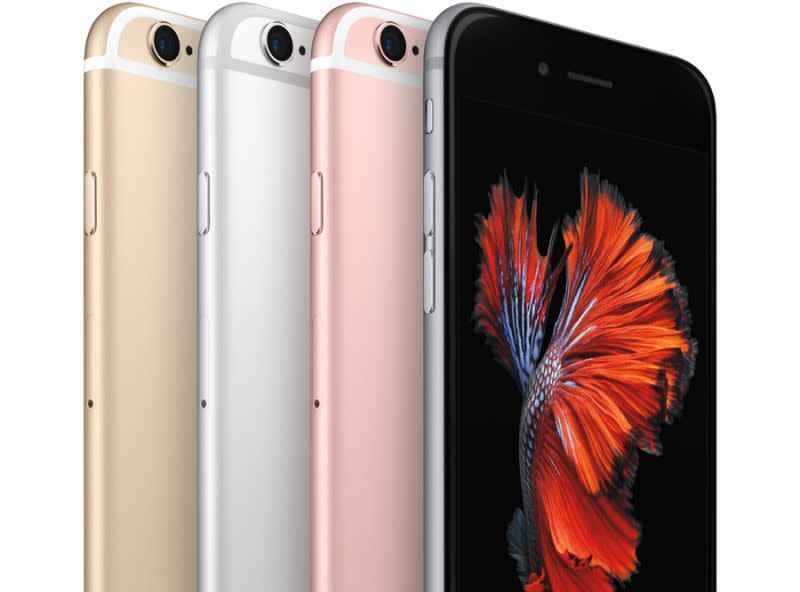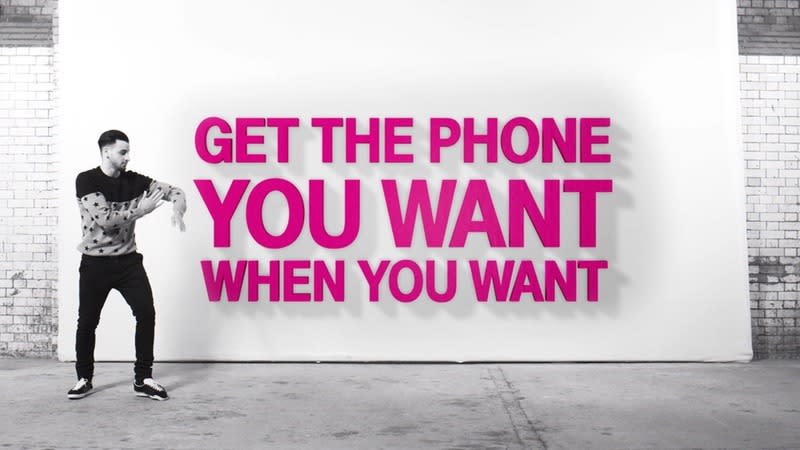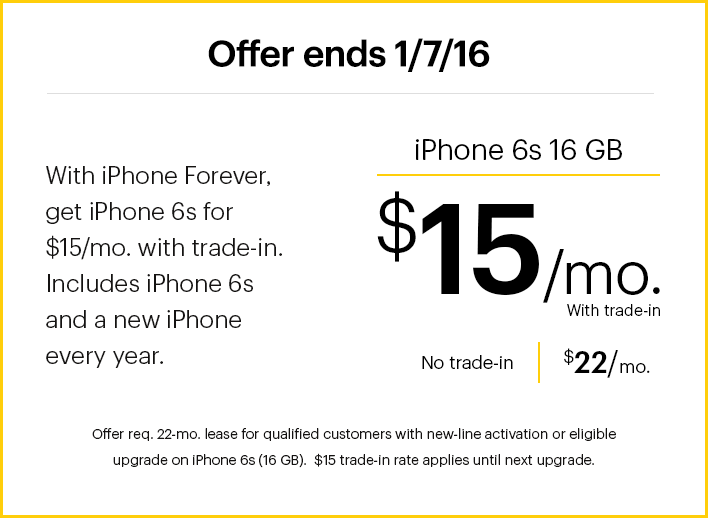Sprint and T-Mobile Backtrack on Crazy iPhone Lease Deals — and Why That’s Good for You

Order is being restored to the smartphone-pricing universe. And while you might not be happy about that at first, you should be.
A few weeks ago, Sprint quietly revised its iPhone Forever lease program — and by “revised,” I mean “made immensely worse.”
Previously, that program could have saved you as much as $26 and change a month compared to the $27.09 cost of buying a new entry-level iPhone on the installment plan. But with this revision, you now save all of 70 cents a month. And, in return, the carrier gets to seriously constrain your choices as a customer.
History of the price wars
iPhone Forever (first called iPhone For Life, but that may have been too reminiscent of a dictatorial job title) is the Apple flavor of Sprint’s leasing option.
The carrier apparently hoped that leasing would replace the old system of subsidized phone purchases — in which we all bought our phones at artificially low prices in exchange for signing those two-year contracts — which all four carriers have now abandoned.
When iPhone for Life debuted in September 2014, $20 a month got you a new iPhone 6, with the promise that you could swap it for the latest iPhone two years later at no extra cost.
That program attracted enough customers that T-Mobile decided to add a lease option of its own the following June. Its Jump! On Demand program also cost $20 a month — $15 if you traded in a phone — but it let you upgrade for free up to three times a year.

A month later, Sprint responded with iPhone Forever, a less attractive deal in which $22 a month ($15 if you traded in a phone) got you a new iPhone every year.
Then, with the September 2015 launch of the iPhone 6s, things got a little crazy. T-Mobile announced that — for a limited time — you could pay just $5 a month for an iPhone 6s (and any future replacements) if you traded in an iPhone 6. Sprint responded a day later, saying it would lease you a 6s for a mere $1 a month — again, if you handed over an iPhone 6 first.
“There’s no need to ‘own’ an iPhone,” Sprint CEO Marcelo Claure told USA Today at the time. But Claure might now want to eat his words.
Walking it back
Barely a month after the iPhone 6s inspired all that price-cutting, T-Mobile quietly rewrote the terms of Jump! On Demand: Now, if you didn’t trade in a phone, a new iPhone 6s would cost $27 a month — the same as if you actually bought it on the installment plan.
It then downgraded the trade-in discount to a one-time credit that’s not as good. For example, you could get $210 for your good-condition AT&T iPhone 6 — almost $12 a month in savings over the 18-month term of a Jump! On Demand contract–but your next upgrade would yield no such credit.
Then, on January 8 — the same day Sprint unceremoniously dumped two-year contracts altogether — the company hiked its monthly lease rate to $26.39.

Sprint’s story, per spokeswoman Kristin Wallace: “Sprint is making this change to stay competitive and to continue to offer customers a great deal on the iPhone 6s.”
Don’t be sad
One analyst’s interpretation: Neither carrier can afford to keep lighting money on fire.
“I think the simple answer is that both companies had a lot of short-term promotions in place to leverage new iPhone sales to drive customer acquisitions,” Jackdaw Research’s Jan Dawson said. But “they can’t afford to massively subsidize them indefinitely.”
You should not be sad to see these lease deals go. Unless you scored one of those $5 or $1 deals, you’d be better off buying a new phone and selling your old one — even just to a phone-resale website.
Roger Entner of Recon Analytics did the math for Sprint: You could pay $26.39 a month for 12 months of a lease and get a new phone for free. Or you could buy the phone outright and sell it to Gazelle for $300. “At the 13-month point you are definitely at the break-even price,” he said.
(If you really feel compelled to replace your phone every year, you might find some value in avoiding the hassle of selling your phone. But is it really necessary to upgrade that often? It’s not as if the iPhone 6 suddenly became a wizened husk when the 6s arrived.)
These lease deals also mean you can’t repurpose an old-but-still functional phone as a WiFi-only device or take it with you to a cheaper prepaid service. If you’re with T-Mobile, a leased phone stays locked until you conclude the full 18-month term. You don’t have to deal with any of those issues if you buy a phone outright.
The real problem isn’t that, as Entner said, “there is no longer a meaningful advantage to leasing” — it’s that companies keep pushing these lock-in deals and customers keep signing up for them.
At T-Mobile, 12.2 million of its 61.2 million total subscribers were on leases in the third quarter of 2015. Sprint hasn’t released lease-customer numbers, but its site prominently displays the lease cost in large type, relegating the Easy Pay installment plan to smaller type below that.
Perhaps these companies need some convincing that leasing should not be the future of smartphone procurement. You could help by not leasing your next phone.
Email Rob at rob@robpegoraro.com; follow him on Twitter at @robpegoraro.


